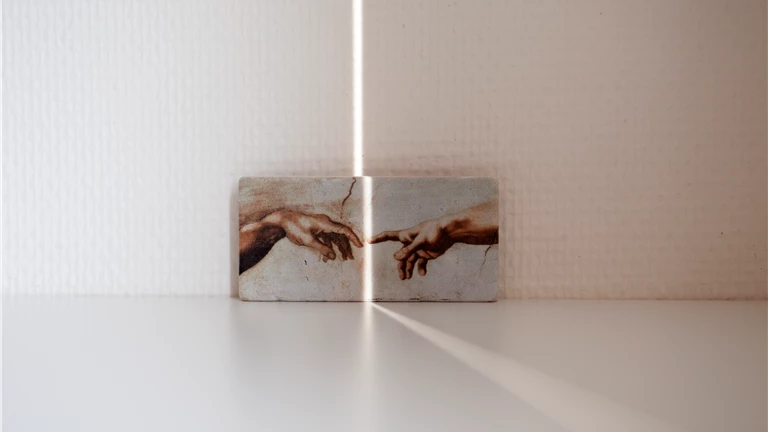Distinguishing UI and UX Design: The Dynamic Duo
UI and UX – user interface and user experience – stand as two sides of the same dynamic coin in the design realm. While they are sometimes used interchangeably, they are distinct entities that work harmoniously to bring forth exceptional digital experiences. Picture them as inseparable companions, each contributing its unique flair to craft immersive and captivating digital experiences.
UI Design
User interface (UI) design focuses on the visual elements users interact with. This includes everything from buttons and icons to typography and color schemes. UI designers are the masterminds behind the look and feel of a digital product, ensuring that it's visually appealing, coherent, and aligned with the brand's identity. Through careful consideration of layout, aesthetics, and interactive elements, UI design crafts a visual narrative that engages users at first glance.
Behind the scenes, UI designers wield their creative brushes to paint the canvas of a digital product. Their role involves sculpting the aesthetic essence of a platform, ensuring that every visual detail is not just visually appealing but also coherent and aligned with the brand's identity. This intricate craftsmanship extends to the layout arrangement, aesthetics, and the interactive components that collectively compose a visual narrative that captures users' attention from the very first glance.
UX Design
UX designers act as architects of digital interactions, meticulously designing pathways for users to navigate. This encompasses understanding user behaviors, needs, and pain points, followed by designing interfaces that are intuitive, efficient, and enjoyable. Whether streamlining complex processes or ensuring seamless content discovery, UX design guides users through digital products, aiming to create satisfaction and engagement.
The Role of a UI/UX Designer
Now that we've unraveled the difference between UI and UX design, let's explore the multifaceted role of a UI/UX designer. These creative wizards blend artistic sensibilities with empathetic insights to sculpt digital experiences that resonate with users on a profound level.
A UI/UX designer wears multiple hats:
- Researcher: They dive deep into user behaviors, preferences, and pain points to inform design decisions.
- Architect: They create wireframes and prototypes, mapping out the user journey and interaction flow.
- Visual Stylist: They infuse the design with aesthetics, choosing colors, fonts, and visual elements that align with the brand.
- Problem Solver: They identify challenges users face and implement intuitive solutions that enhance usability.
- Empathetic Designer: They consider the emotional impact of design choices, ensuring that user experiences evoke desired feelings.
- Collaborator: They work closely with developers, content creators, and stakeholders to bring the design to life.
Let's understand these in greater detail:
Researcher
The role of a researcher requires delving deep into the psyche of users. UI/UX designers engage in comprehensive research to understand user behaviors, preferences, and pain points. This invaluable insight guides design decisions, ensuring that every aspect resonates with the intended audience. By examining user journeys and feedback, designers glean the insights needed to create experiences that address real-world needs.
Architect
In the capacity of an architect, UI/UX designers construct the blueprint of digital experiences. They transform abstract ideas into tangible structures by creating wireframes and prototypes. These visual frameworks outline the user journey and interaction flow, providing a tangible roadmap for the design process. Architects in this context focus on ensuring intuitive navigation, logical sequencing, and efficient user interaction.
Visual Stylist
UI/UX designers are also visual stylists, breathing life into digital interfaces with thoughtful aesthetics. They meticulously select colors, fonts, and visual elements that align harmoniously with the brand's identity. By skillfully integrating design elements, designers enhance user engagement and create a consistent visual language that resonates with users.
Problem Solver
A core aspect of the role involves being a problem solver. UI/UX designers identify challenges that users encounter during their interactions and conceive innovative solutions. Whether it's simplifying a complex checkout process or streamlining content discovery, problem solvers in UI/UX design transform stumbling blocks into seamless pathways. This practice elevates usability and cultivates positive user experiences.
Empathetic Designer
UI/UX designers are not just creators; they're empathetic designers who consider the emotional impact of design choices. They aim to evoke desired emotions through user interactions. By thoughtfully curating interfaces that resonate with users on an emotional level, empathetic designers ensure that every interaction leaves a lasting impression.
Collaborator
Collaboration is the backbone of successful UI/UX design. Designers work closely with developers, content creators, and stakeholders to breathe life into concepts. This collaborative approach ensures that the final product aligns with diverse perspectives and technical requirements. The ability to collaborate effectively bridges the gap between design and implementation, resulting in a seamless user experience.




